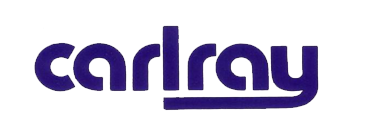Importance of Maintaining Reinforcement Continuity at Concrete Joints.
Reinforcement continuity at concrete joints is an important consideration in the design of reinforced concrete structures. In recent years, several major failures of reinforced concrete structures due to poor reinforcement continuity at concrete joints have occurred and these failures have become more common. Therefore, it is necessary to increase awareness regarding the importance of maintaining reinforcement continuity at concrete joints.
What is a Reinforcement Continuity System?
Reinforcement continuity strip systems or ‘pull-out bar’ systems are widely accepted methods of providing reinforcement continuity across concrete construction joints. The reinforcement continuity system is designed to keep the integrity of the concrete structure during the construction process. Overlapping reinforcements are used to create a connection using the system. The purpose of joint reinforcement is to ensure the integrity of the structure. Joints offer a point of weakness between two components of a building. For example, a column-to-beam joint allows lateral force to transfer from one element of a structural system to another. Similarly, a beam-to-column joint allows vertical forces to transfer from one element to another. The reinforcement continuity system ensures that these forces remain within acceptable limits.
Concrete is widely used in construction because of its durability. However, it is a brittle material that easily suffers damage such as cracking, spalling, and delamination because of environmental factors such as temperature changes and moisture absorption. Thus, reinforcement is required to prevent these damages. Generally, reinforcing steel bars (rebar) is embedded in concrete and tied together with rubber tie to achieve the desired reinforcement effect. For instance, concrete beams are reinforced by inserting steel rods called rebars inside the concrete. The steel rods are bundled together and tied with rebar ties to form continuous reinforcement at the joints between the adjacent rebars. To maximise the reinforcement effect, the rebar should be arranged closely at the joints between the rebars. To maintain the reinforcement integrity, the rebars should be attached tightly to each other and the rebar ties.
Applications of Reinforcement Continuity System
Any concrete construction joints can be created using this technique. The main applications are,
- Brick support ledges
- Pile caps
- Walls
- Stairwells
- Floor slabs
- Gutters and chambers
- Corbels
Difference between Ancon keybox reinforcement and conventional reinforcement continuity systems
The Ancon Keybox Reinforcement Continuity System is a simple and quick to set up method for maintaining reinforcement continuity at concrete construction joints. There is no need to drill shuttering, and formwork design is simplified. A galvanised steel casing with dimples is included in each unit, which serves as a strong concrete connection. The bars are kept in a protective cover and enclosed within the casing. The bars may be straightened before being applied to the main reinforcement after the cover is removed.
Conventional reinforcement continuity systems (CRC) at concrete joints have been used successfully for decades. They consist of two steel plates placed face-to-face with a narrow gap between them. The steel plates are connected together at the edges using a tensioned wire. The tensioning of the wire produces compression forces within the system that ensure the strength and durability of the connection. The main advantage of CRCs is that they reduce the number of rebars required at a construction site. This increases the sustainability of the project due to reduced amounts of materials being transported and handled during construction. However, it has been observed over recent years that the performance of these types of connections was declining due to corrosion problems caused by chloride ions in the environment.
Read More:


